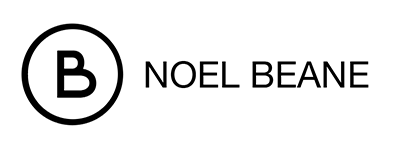Leadership: Cross-Functional Collaboration
Why Building a Culture of Collaboration is as Vital as Sketching Wireframes
Let’s talk about something we don’t always highlight enough in product design: collaboration. Sure, we’re all about wireframes, user flows, prototypes, and pixel-perfect designs. But if you’re not actively building a culture of collaboration with your cross-functional teams, you’re leaving one of the most important tools in your design toolkit untouched.
Here’s the thing—product design doesn’t live in a vacuum. It thrives at the intersection of design, engineering, product management, research, marketing, and sometimes even legal (hello, accessibility compliance). The best designs come to life when we break out of our silos and create an environment where ideas can flow freely between teams. And guess what? That doesn’t just happen by chance. It’s a skill—one as essential as knowing how to craft a killer user experience or mastering Figma shortcuts.
Why Collaboration Matters
Let me paint you a picture: You’ve just spent weeks perfecting a design for a new feature. You’re convinced it’s your best work yet. Then comes the handoff meeting with engineering, and—boom—they tell you it’s not technically feasible. Or worse, marketing says it doesn’t align with the brand strategy. Frustrating, right?
Now imagine if you’d involved those teams earlier in the process. By fostering a collaborative culture, you could have caught those issues before they became roadblocks. Collaboration isn’t just about being nice or checking boxes—it’s about making better products faster, with fewer headaches along the way.
Building Collaboration is a Skil
Here’s where it gets real: knowing how to build a culture of collaboration is just as much a skill as designing an intuitive interface. It takes effort, practice, and intention. You’ve got to learn how to listen actively, communicate clearly, and create spaces where everyone feels heard.
Think of it like this: just as you’d refine a design based on user feedback, you need to refine your collaboration approach based on team dynamics. Maybe your engineers prefer async communication over Slack instead of endless meetings (who doesn’t?). Maybe your product manager thrives on visual roadmaps instead of long documents. Understanding these nuances is part of the job.
Collaboration vs. Individual Design Skills
Let’s compare it to some core design skills:
- Empathy for Users: As designers, we pride ourselves on understanding our users’ needs. Collaboration requires that same level of empathy—but for your teammates. What are their goals? What are their constraints?
- Iterative Processes: Just like you iterate on designs, collaboration is an iterative process too. You try something—maybe it’s a new workshop format or a shared design doc—and then tweak it based on what worked (or didn’t).
- Storytelling: Designers are natural storytellers, weaving narratives through visuals and interactions. Collaboration is about telling the story of why your team’s collective vision matters and getting everyone excited to contribute to it.
Tips for Cultivating Collaboration
Alright, enough theory—let’s get practical. Here are some tried-and-true ways to build that collaborative magic:
- Start Early: Involve cross-functional partners from day one. Don’t wait until you’ve got a polished design to share—it’s easier to course-correct early on.
- Over-Communicate: Share updates often, even if they’re rough drafts or half-baked ideas. Transparency builds trust.
- Facilitate Workshops: Run brainstorming sessions or collaborative workshops where everyone has a voice. Pro tip: Use tools like FigJam or Miro to make these sessions engaging and productive.
- Celebrate Wins Together: When a feature launches successfully, shout out everyone who contributed—not just the design team.
- Be Open to Feedback: Collaboration isn’t about always being right; it’s about being open to other perspectives and finding the best solution together.
Key Take Aways
If you think about it, building a culture of collaboration is like designing the ultimate system for teamwork—a system where everyone feels empowered to contribute their best work, where ideas are refined through diverse perspectives, and where the end result is something none of us could have achieved alone.
So yes, master those wireframes and nail that user research—but don’t forget that collaboration is what turns good designs into great products. And as a product design leader, fostering that culture might just be the most impactful design work you’ll ever do.
Tagline
Acquisition
value
desc
Engagement
value
desc
Conversion
value
desc

